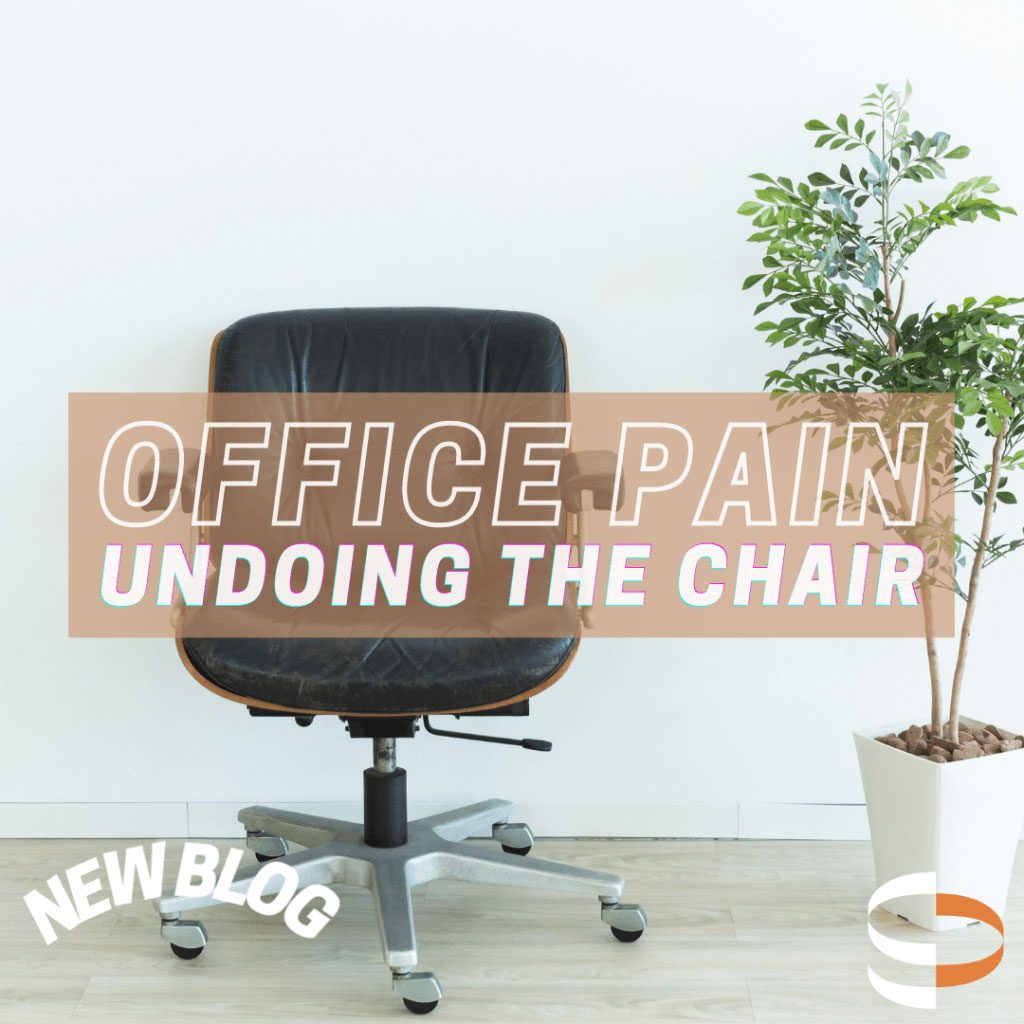Are you getting sore while you’re at work? Have you thought about how your current workstation is set up?
Our latest blog talks all things workplace ergonomics, and strategies to stop you from sitting too much while you’re at work. We’re going to walk you through how to “undo the chair”, trying to negate some of the negative effects of sitting, and some strategies that you might not have thought of to assist in decreasing the amount of time you’re sitting while at work.
Undoing the Chair
Given that we sit for an average of 10hours per day, don’t you think that we should be doing something to help prevent the complications!?!?!
BUT!
What should we be doing? And how?
Our latest blog, “Undoing the Chair” is all about mobility training & work, stretches, and other strategies that you can take to help “undo” any negative impacts of sitting.
These are simple little exercises that you can do everyday at the beginning or end of your workday to help prevent long-term or more serious complications from sitting.
We also have a little advice on some of the strategies that you should be taking to help reduce your amount of sitting throughout the day.
Sitting Statistics
While sitting in Australia is not an uncommon thing, especially in the workplace, it is detrimental to the human body. In recent years there has been millions of dollars pushed into the impacts of sitting, and ways to reduce the amount of sitting – especially in the workplace. Not sure if you have noticed, but about 5years ago…standing desks weren’t really a thing, and now it seems like everyone has one!!
So what is actually going on in the body with sitting, and why does everyone think sitting is so bad for you.
A study from 2015 has shown that sitting for longer than 4 hours every day can lead to:
- Reduction in the enzymes that burn fat in the blood
- Lower metabolic rate (calorie burning)
- Increased insulin and blood pressure
- Decreased leg muscle activity (further lowering metabolic rate)
The combination of these things can lead to more serious health concerns such as;
- Heart disease
- Diabetes
- Obesity
- Cancer
- Dementia
- Depression
- Muscle degeneration (atrophy)
- Backpain while sitting
Mobility
Thoracic rotations / bow and arrow
Shoulder mobility – shrugs, rolls
Arm circles exercises
Thoracic extensions over the back of the chair
Pelvic tilting – forward and backward, side to side
Sit to Stand exercise
Calf activations
Stretches
Tricep stretches
Arm Stretches – forward (reach), up (extension), back (pecs)
Side stretch – Lats (arm overhead w/ lean)
Knee to chest stretch
Strategies to combat sitting!!
The best strategy to combat the effects of sitting is standing!
Now, we’re not saying that you have to be standing all day, because that won’t be great for your body either.
If you’re able to organise it with your place of employment to get a sit-to-stand desk or a sit-to-stand frame on your desk that is the best option. However, getting these things can be quite expensive, especially when there are multiple employees within a business.
If you’re not able to organise a sit-to-stand desk, don’t stress, there are other strategies that you can use to break up the amount of time you’re spending sitting everyday.
Some of the smaller strategies that you can use are things like, getting up and walking around while you’re on the phone, if you’re in a short meeting – getting up and walking around the room, taking a “walking lunch” and walking around while you’re eating your lunch, generally trying to get up and away from your desk once every hour is a good practice to get into.
Now What?
Sometimes even when you do everything right, making sure that you get up and away from your desk every hour, and that you’re moving more throughout the day – you still get pain!!
The best thing to do in that situation is to take photos of your workstation setup, and head in to see your Physiotherapist. Your Physiotherapist will be able fully assess your situation and determine what the underlying causes of your pain might be. Whether your pain is being caused purely by your workstation ergonomics or whether there is something else that is causing or contributing to your pain. Once the root cause of your pain has been determined, your Physiotherapist will be able to guide you through your full rehabilitation journey.
Along with that, your Physiotherapist has knowledge around the best possible ergonomic setup for you and your workstation. So, taking a photo of your current situation with you to your appointment will put you one step closer to being pain free at work.
The Physiotherapy Team at Leaders Sports & Spine Physiotherapy in Brisbane’s CBD are your experts when it comes to ergonomic setups, and home exercises to get you strong for work!






